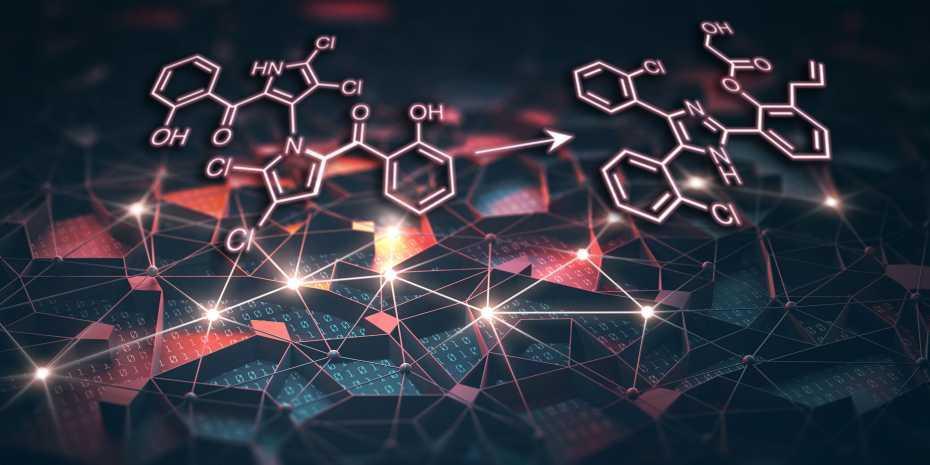
Artificial intelligence (AI) can be trained specifically to recognize the biologic activity of natural substances. As researchers at the Swiss Federal Institute of Technology in Zurich (ETH) were able to show, this is important for natural substances where the effect is already known but not the mode of action.
The bacterial molecule marinopyrrole A served as the starting point: we know that it has antibiotic and anti-inflammatory effects as well as the fact that it is effective against cancer, but what we don’t know is how. The team’s AI ascertained the eight human target proteins to which it can dock. Laboratory experiments then confirmed the interaction at these docking sites identified by the AI. Gisbert Schneider, Professor of Computer-Assisted Drug Design at ETH, is quoted in a report from the ETH, saying: “Our AI method is able to narrow down the protein targets of natural products with a reliability often in excess of 50 percent, which simplifies the search for new pharmaceutically active agents.”
Like many other natural substances, marinopyrrole A has a relatively complex structure, which means that laboratory synthesis is time-consuming and expensive. For this reason, the researchers used their AI in a second stage to search for molecules that display chemical features that are comparable to those of their natural model despite being different in structure. Another requirement was for the molecules being sought to be created in at most three synthesis steps.
From a catalog of over 200 starting materials, 25,000 commercial chemical building blocks and 58 established reaction schemes, the program selected 802 suitable molecules. The researchers created the best four in the lab. They displayed very similar activity to their models: the effect was comparable to that of the natural molecule for seven of the eight target proteins identified by the algorithm.
This significantly simplifies the development of drugs according to Schneider and “places us on the cusp of a potentially fundamental change in medical-chemical research”. He adds that this is because the AI could also find alternatives to existing drugs that are easier to manufacture and therefore cheaper. Discussions are already underway with regard to bypassing drug patents as well as the potential patenting of molecules that have been designed by AI. The ETH closes by stating: “The pharmaceutical industry will have to adapt its research approach to a new rulebook.”
Related news
Contact us
Can we put you in touch with a peer company or research institute? Do you need any information regarding your strategic expansion to Switzerland's technology and business center?
info@greaterzuricharea.com




